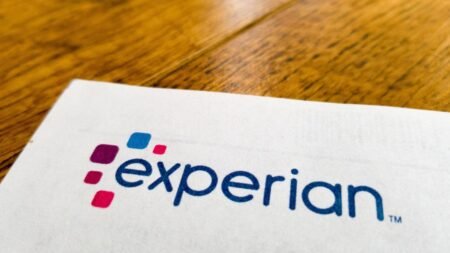Here’s a way of lowering the overall cost of payments by using circulating bank-issued tokens instead of cash as a means of exchange. It’s called the “deposit-cheque” and I’ll explain it using paper as the implementation (and British spelling for the explanation!)
Deposit Checks
The deposit-cheque scheme works in this way. Customers are given books of cheques that are preprinted with a maximum amount and protected with a simple anti-rewriting mechanism such as perforations with the same amount on them. To avoid the problem of cheques bouncing and the uncertainties related to clearing (and to obviate the need for any form of cheque guarantee card, as we used to have in the UK) the value of the cheques given to any customer is against money that is held in an interest-bearing account for them.
So, for example, I would ask Citi for $100 in deposit-cheques. Citi then give me a book of ten maximum $10 cheques. The $100 is moved from my checking account to an interest-bearing deposit account solely for the purpose of backing the cheques. The cheques would be valid for, say, two years.
When I want to pay my gardener $20, I sign two of the cheques and give them to her. Now that the cheques have been signed by the owner, the gardener can use them in lieu of cash, up until the expiry date – no need to pay them into a bank account, which is the time-consuming and expensive part. She can use them to pay her hairdresser, who can then use them at the farmer’s market and so on. Everywhere they go, they are accepted at par.
Such paper bearer instruments — no, wait, let’s stop calling them paper bearer instruments, let’s call them “tokens” — are pre-paid and therefore behave as a substitute for cash. You can see the attraction of such a scheme in a world before ATMs, because the book of tokens is like an ATM at home and when you sign a $5 token to activate it, it is just as if you have drawn the $5 out of an ATM (except that it is cheaper and more convenient).
For those readers familiar with the technologies of cryptocurrency and business model of banks, this token scheme sounds something like the Regulated Liability Network (RLN) — the RLN scheme proposes a settlement infrastructure to ensure that tokenised money is interoperable between issuers (e.g., Citi Dollars and Wells Fargo Dollar) — and indeed it is, except that it was invented in 1873 by a Mr James Hertz. Mr Hertz set up a “Cheque Bank” in London saying that he intended it to become the medium for the “accomplishment of an immense mass of small payments”.
The idea behind The Cheque Bank Ltd was to address the limitations and risks associated with traditional cheques in the 19th century. At that time, cheques were primarily used by wealthy people (and businesses) and required the payee to have a bank account to deposit the cheque, which wasn’t always convenient or feasible for all individuals or businesses. It had quite a good “ignition strategy” as far as I can see. They were targeting businesses for whom the payment of wages in cash was an onerous and expensive task. According to the Handbook of London Bankers for 1876, there were nearly one thousand banks who honoured the innovative paper tokens, so they clearly had something going for them!
Sadly, the Cheque Bank is long gone. It shut down in 1902 after almost three decades in business. The London banking landscape had evolved significantly over that time, with many banks offering similar services directly to their customers. The issuing of cheques and the guaranteeing of funds became standard banking practices and the niche evaporated.
Despite this, perhaps it is time for the worlds of fintech and crypto to come together and look again at the idea of such tokens in the form of bank stablecoins. In the absence of a US Digital Dollar, bank dollar stablecoins might fill a niche. This is not far-fetched, although there are of course regulatory considerations. The Bank for International Settlement (BIS) recently released its “Recommendations for the Regulation, Supervision and Oversight of Global Stablecoin Arrangements” which call for good risk management and governance (and that sort of thing) so there are no fundamental barriers. The Federal Reserve has already said that state banks can do this (but they should obtain a written supervisory non-objection from the Fed before issuing, holding or transacting in dollar tokens used to facilitate payments, such as stablecoins.)
Checks And Vinyl!
Will we see an electronic revival of the Victorian paper tokens as a form of money in the near future? Perhaps. Fredrik Andersson and Judith Arnal, in their paper “Why would a traditional financial player be interested in issuing a stablecoin? ” suggest that a combination of straightforward financial interests (e.g., float interest) and the desire to bring in new customers could be behind traditional market players deciding to issue their own stablecoins. They look at the case of SG-Forge, linked to France’s third largest bank, which announced in December 2023 that it would begin issuing its own stablecoin (EURCV), using the CAST Framework of market standards designed for digital blockchain-based securities. EURCV will be pegged to the euro and backed by cash, and the paper says there are some interesting use cases around decentralised financial services (whereas for retail customers, it says that “their interests do not seem so clear-cut” and the use cases are rather limited.)
I could imagine holding bank-issued stablecoins in my digital wallet, but I have a suspicion that in time most people will drift towards tokens backed by central bank reserves. In other words, in a world with a Digital Pound, it’s not clear why anyone would hold Barclays Bunce, CapOne Cabbage, Wells Wonga or Lloyds Lolly.
Read the full article here

















